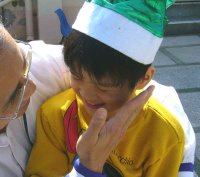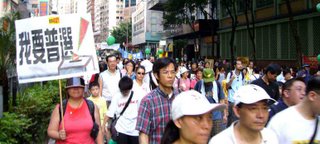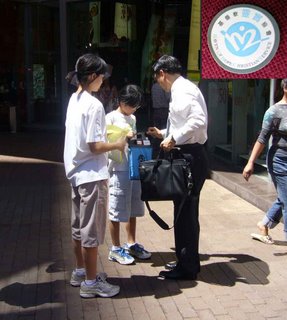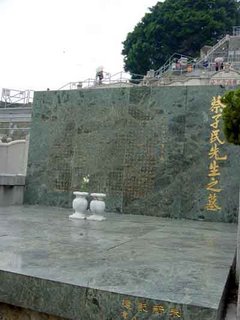 In the middle of July a colleague and I took 10 of our students at the PolyU to a city in Hubei for a week. There we joined another group from a Hong Kong church to run a summer camp, organized for local (Hubei) junior high school students. The church team taught phonics and we taught Flash and robot programming in support of the English learning.
In the middle of July a colleague and I took 10 of our students at the PolyU to a city in Hubei for a week. There we joined another group from a Hong Kong church to run a summer camp, organized for local (Hubei) junior high school students. The church team taught phonics and we taught Flash and robot programming in support of the English learning. It is a form of “service learning” that is now increasingly popular in many countries all over the world. In this case, our students learn and practice new computing skills, learn to teach and interact with Chinese students, interact with each other and the church team, spend a week in a city in China which they would not normally visit, and have great fun in the process.
It was hot! Daytime temperature was about 35 degrees Celsius. Even in the air conditioned classrooms, it was 30 degrees. But it was fun. HuangShi is one of the largest cities in Hubei, after Wuhan. Some of the local kids were mostly from relatively well-to-do families - it was obvious from their rosy round cheeks and healthy appearance. (The team sent to another, more rural school reported that the kids there were much poorer, but worked much harder in their studies.)
They were curious and eager. They were very interested in knowing about Hong Kong, about other cities in China, about universities, about foreign countries. They wanted to go to universities but to come home to HuangShi. A girl was interested in literature and wanted to go to Oxford. Another wanted to be an explorer.
They were also interested in Christianity. They felt they are free to believe in what they want and some have been to local churches. Many know, to differing degrees, about Christmas, Easter and Jesus. If you wish to know more about this aspect of the trip, send me email.
Our university students behaved admirably. They were fun-loving and energetic, resourceful, disciplined, demonstrated great teamwork among themselves, and mixed well with the church team as well as the local kids. They are students that we, as their teachers, can be proud of.
 Some of the kids at the special school recognized me from previous visits. One kid that I met the first time several years back as a toddler was now 12. His lips and mouth were still purple because of some chronic health problems. But he was talking excitedly, hugged me many times, and joined in all the games. Another girl was about 5, I believe. She could not talk, walk, hold anything with her hands, nor even sit up. But when I held her, she showed me the most beautiful contented smiles. She was twisting and turning all the time, making it difficult and tiring to hold her. But I just couldn’t bear to put her down.
Some of the kids at the special school recognized me from previous visits. One kid that I met the first time several years back as a toddler was now 12. His lips and mouth were still purple because of some chronic health problems. But he was talking excitedly, hugged me many times, and joined in all the games. Another girl was about 5, I believe. She could not talk, walk, hold anything with her hands, nor even sit up. But when I held her, she showed me the most beautiful contented smiles. She was twisting and turning all the time, making it difficult and tiring to hold her. But I just couldn’t bear to put her down. 







